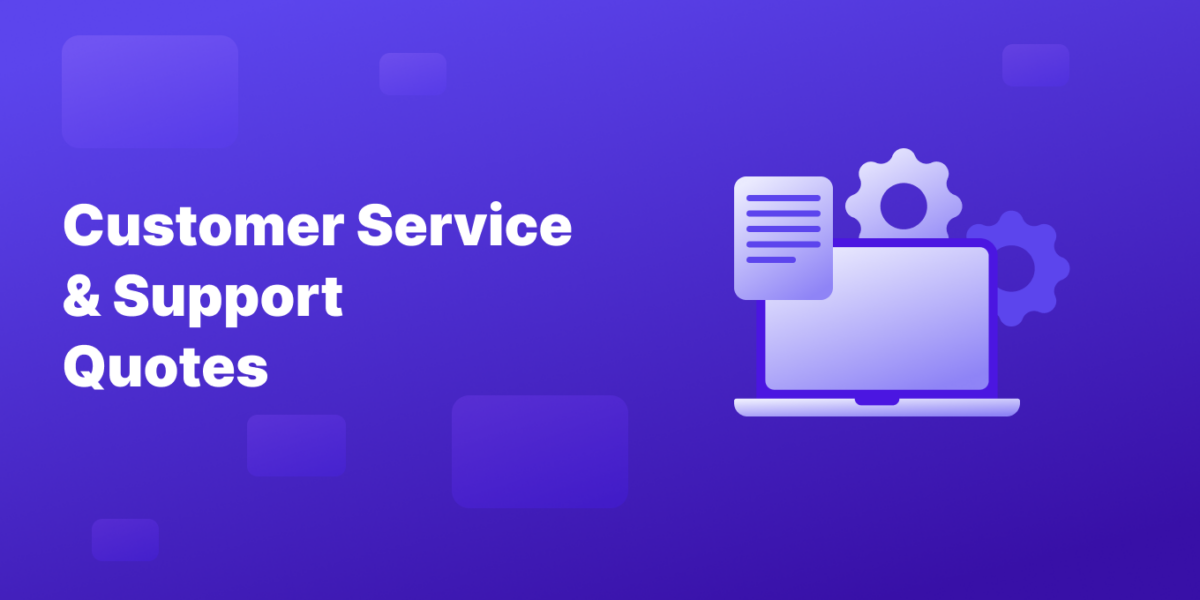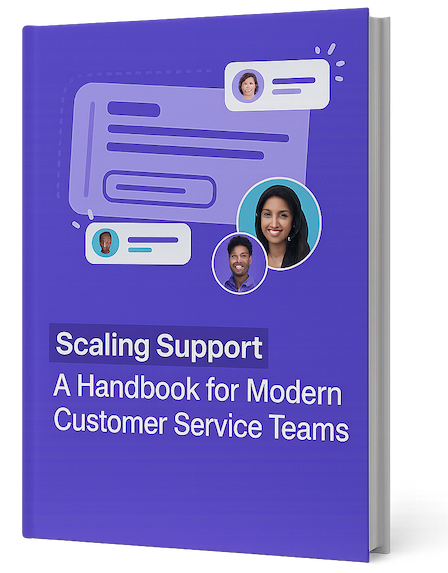Navigating customer service in the SaaS industry requires tact, empathy, and a deep understanding of your product.
This guide presents 13 expert-crafted responses for challenging questions, designed to enhance customer satisfaction, foster loyalty, and ensure a seamless support experience.
By utilizing these tailored responses, you can navigate difficult questions with grace and professionalism, turning challenges into opportunities for growth and customer loyalty.
Remember, every interaction is a chance to reinforce your commitment to your users’ success.
Template 1: Pricing Confusion
Use it when: Customers are confused about your pricing plans, have questions regarding the value of different tiers, or are comparing your pricing with competitors.
Response: “Thank you for reaching out with your concerns about our pricing structure. I understand it can be confusing. Our pricing is designed to scale with the size of your team and the features you need. I’d be happy to walk you through our plans to find the best fit for you. Can we schedule a call to discuss this in detail?”
Template 2: Request for Features Not Available
Use it when: Customers request features or functionalities that your software currently does not have, or when they are providing suggestions for improvements.
Response: “I appreciate your suggestion for [feature request]. While we currently don’t offer this feature, I’ve forwarded your request to our product team for consideration in our roadmap. We value your feedback as it helps us improve. Can I update you if this feature becomes available?”
Template 3: Dissatisfaction with Service Update
Use it when: Customers express dissatisfaction or face issues after a recent update or change to your service.
Response: “We’re sorry to hear the latest update hasn’t met your expectations. Your feedback is crucial, and we’re keen to understand specific areas for improvement. Could you share more details about the issues you’re facing? We’re committed to making this right for you.”
Template 4: Cancellation Request Due to Non-Usage
Use it when: A customer requests to cancel their subscription due to not using the service as much as they expected. This response provides an opportunity to review their account, suggest ways to make better use of the service, or discuss alternative subscription models.
Response: “We’re sorry to see you go and understand that sometimes our service may not fit every need. Before proceeding with the cancellation, may I offer a complimentary consultation to ensure you’re leveraging all relevant features? Alternatively, we can discuss pausing your subscription.”
Template 5: Data Security Concerns
Use it when: A customer inquires about or requests a feature that your service currently does not offer. It helps manage their expectations and keeps them informed about potential future updates or alternatives.
Response: “Your data security is our top priority. We employ [specific security measures] to protect your information. I’d be happy to share more details about our security practices or address any specific concerns you have. Ensuring your confidence in our service is paramount.”

More tips about customer service from Supportman
Template 6: Complaint About Service Downtime
Use it when: A customer complains about experiencing downtime or service interruptions. This template is for apologizing for the inconvenience, explaining any measures taken to resolve the issue, and how you plan to prevent such occurrences in the future.
Response: “We sincerely apologize for the recent downtime and any inconvenience it caused. Our team worked diligently to resolve the issue, and we’ve implemented measures to prevent future occurrences. Your trust is valuable to us, and we’re committed to providing reliable service.”
Template 7: Slow Response Times
Use it when: A customer is frustrated with slow response times to their inquiries. It acknowledges the delay, explains the reason (if applicable), and reassures them that their issue is being prioritized.
Response: “Thank you for your patience. We apologize for the delay in responding to your query. We’re experiencing higher than usual volume but are committed to assisting you as quickly as possible. Your issue is our priority, and we’re here to support you.”
Template 8: Comparison with Competitors
Use it when: A customer is comparing your service with competitors, possibly questioning why they should choose or stay with your service. This template highlights your unique selling points and commitment to customer satisfaction.
Response: “We understand there are several options on the market, and it’s important to choose the solution that best fits your needs. Here’s how we stand out: [unique selling points]. I’d be happy to discuss any specific concerns or requirements you have.”
Template 9: Request for Refund Outside Policy
Use it when: A customer requests a refund that falls outside your standard policy parameters. It offers a pathway to review their request on a case-by-case basis, showing flexibility and understanding.
Response: “While our refund policy typically covers [policy details], we understand there are unique situations. Could you provide more details about your experience? We’re committed to your satisfaction and will review your request to find the best solution.”
Template 10: Difficulty Understanding the Software
Use it when: A customer is having trouble understanding how to use your software effectively. This is a cue to offer additional resources, training, or personalized support to help them get the most out of your service.
Response: “It sounds like you’re facing some challenges with our software. Let’s schedule a personalized training session to walk you through the features and answer any questions. Our goal is to ensure you feel confident and get the most out of our service.”
Template 11: Questions About Integrations
Use it when: Customers inquire about how your service integrates with other tools and platforms they use. This response should clarify available integrations and offer assistance with setup or troubleshooting.
Response: “Integrating seamlessly with your workflow is important. Our platform integrates with [list of integrations]. If there’s a specific tool you’re interested in, let me know, and I can provide more details or explore potential solutions.”
Template 12: Account Access Issues
Use it when: A customer is unable to access their account. This template ensures security protocols are followed while assisting the customer in regaining access as smoothly as possible.
Response: “We’re sorry to hear you’re experiencing access issues. For security reasons, could you verify some account details? We’ll promptly assist you in regaining access and ensure everything is set up correctly for uninterrupted use.”
Template 13: Feedback on Product Complexity
Use it when: Customers provide feedback that your product is too complex or difficult to navigate. This response is an opportunity to offer guidance, solicit specific feedback, and discuss potential simplifications or improvements.
Response: “Thank you for your honest feedback. We’re constantly working to improve user experience and appreciate insights on how we can make our product more intuitive. Would you be open to sharing more detailed feedback, perhaps in a short call?”
What To Remember With Customer Communication
When a customer reaches out with an issue, the initial step is to acknowledge their dissatisfaction and request clarification.
This approach validates their feelings and opens the door to a constructive dialogue. Utilizing forms can streamline the information-gathering process, ensuring you capture all relevant details. Employing de-escalation techniques is crucial in maintaining clarity and calm, especially with difficult conversations.
By focusing on these aspects, you can navigate through customer issues with ease and professionalism.
Identifying and Categorizing Customer Issues
To effectively address concerns, it’s vital to identify and categorize customer issues. Start by acknowledging their dissatisfaction and expressing a genuine desire to assist. Implementing a structured approach, such as a form, encourages customers to provide specific details about their experience, which is invaluable for accurate issue resolution. Regular follow-ups not only keep the customer informed but also reassure them that steps are being taken to prevent future occurrences, thereby fostering trust and loyalty.
Listening Actively to Customer Concerns
Active listening is a powerful tool in customer service. Allow customers to express their grievances fully, demonstrating genuine interest and understanding. This not only helps in accurately identifying the problem but also shows that you value their input. By engaging in this manner, you can develop tailored solutions that effectively address their concerns, enhancing overall satisfaction.
Empathizing with Customers
Empathy is the heartbeat of effective customer service. It involves putting yourself in the customer’s shoes and understanding their perspective. This emotional connection can transform a negative experience into a positive one, paving the way for stronger customer relationships.
Response Times
The use of canned responses significantly reduces response times, boosting customer service productivity and enhancing the customer experience. By setting realistic response time expectations and prioritizing urgent inquiries, you ensure that customers feel heard and valued, even during peak times or when dealing with complex issues.
Communicating Delays Effectively
Transparency is key when communicating delays. By setting clear expectations and providing regular updates, you mitigate frustration and maintain trust. This proactive approach demonstrates your commitment to customer satisfaction, even in challenging situations.
Positive Experience Examples
Celebrating positive experiences is just as important as addressing concerns. Acknowledging and appreciating positive feedback reinforces a positive company image and encourages ongoing engagement. It’s a simple yet effective way to maintain balance in customer interactions.
Going Above and Beyond for Customers
Exceeding customer expectations is what sets a company apart. By proactively addressing needs, offering personalized solutions, and continuously seeking feedback, you not only solve current issues but also preempt future ones. This commitment to excellence is what leads to loyal, satisfied customers.
Handling Angry Customers
Dealing with angry customers is a delicate art. It requires empathy, understanding, and effective problem-solving skills. Acknowledging their feelings and offering clear paths to resolution can turn a negative experience into an opportunity for growth. Remember, the goal is to protect your brand’s reputation by ensuring every customer feels valued and heard.
Increase your support team’s efficiency with Tettra & Supportman:
- Tettra: Create and maintain a knowledge base that ensures your team has easy access to consistent, up-to-date information.
- Supportman.io: Monitor agent performance and customer satisfaction in real time through this vital integration with Slack and Intercom.
Together, these tools help your team provide top-notch support, driving both performance and customer satisfaction.


